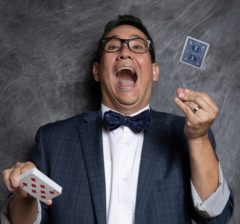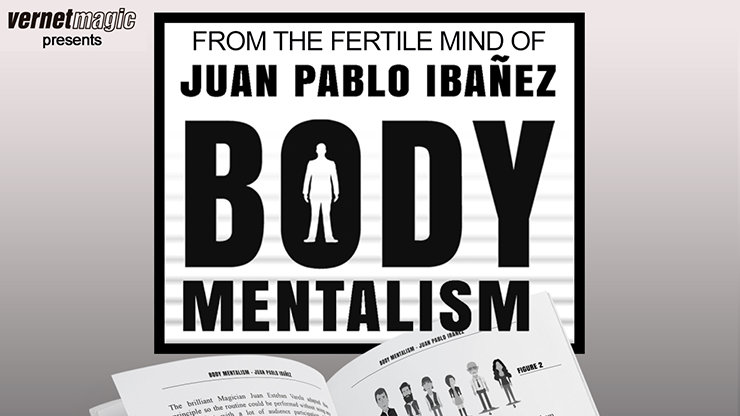Last night I picked up a last minute gig hosting a showcase. This is for a conference where people go to book acts, I showcased last year and can’t this year. However when I was asked to host their virtual showcase, I agreed as getting face time is always good!
Hosting these is more complex than simply doing material and then announcing acts. The host isn’t supposed to showcase their act. That said, when I accepted the gig, I immediately got started writing down ideas that were fun magical moments. I have seven acts to introduce, which is a lot of material to figure!
How I did this was write down a lot of ideas. Basically I’m just looking for a way to produce the acts name. These have to be quick, and not too involved. After the initial brainstorming, I started to make one of the ideas. One of the acts had a really long introduction. The idea was to have all the text written out, then have all the words change to his name. My first thought was to use black art on the table, but didn’t like that as it’s harder to frame my face. Then I thought about making a flap card. When I first learned to make more modern flap cards, I made an index card that was a flap card. It looks like Blake Vogt is currently selling one called Acro-Index, check his out if you like the idea, and don’t know how to make one.
Once I had the index card trick, I looked at all of my other ideas and started to look at all of the ones that could be adjusted to an index card. I got about 4 of the ideas to work with an index card, and then brainstormed three more.
That gave some options, not every act needs an trick with the introduction. I’m going to record all of them two ways. One as just the introduction and one with the trick. I’ll pick the one that flows better. I’m recording these today, even if they don’t work out, at least it was a fun creative exercise!
Category: virtual magic show
Virtual Rehearsals…
Most of us are in a world now where we’re booking virtual shows, instead of converting in person shows to virtual shows. What that means is that instead of trying to save a gig from cancelling, we’re creating a completely new contract.
This has created another new trend, the virtual rehearsal. This is where whoever is hosting your show wants you to video and sound check about a week before your show. I think these now exist for a couple of reasons, the first is whoever is running the show (in house IT, or outside company) for the booker wants to make it look like they’re giving more value. The next is that they’ve been burned by a performer previously. It could have been that the performer had bad internet connection, horrible camera, or a bad mic.
Here’s the big thing, what does this rehearsal fix? Most of us are building our virtual theater’s for shows, and don’t have a dedicated space that stays set up 100% of the time. If someone asks me to move a light, it probably won’t be in the exact same spot on the show day. Also it may get moved for another show.
I’m just unclear what the point of a rehearsal is. They aren’t running any production for me, so why is there a walk through?
Also, doing a full rehearsal (which is what people are starting to ask me for) doubles the time commitment to the show. I’m literally doing two shows. When I mention that, I have yet to have someone be willing to pay for the second show.
Live is Easier…
One thing that I really dislike doing are prerecorded virtual shows. I do my best to avoid them, or talk the person into having my segment live. A prerecord is soo much more work than doing it live. It’s more than just turning the camera on and going for 15 mins. There’s editing, rendering and uploading that needs to happen. I don’t think a lot of people thing about that.
If you’re doing prerecorded shows and not editing, you aren’t taking advantage of the format. You can crop in for tighter shots, or add things that aren’t as easy to do in a live format.
I’m working on a 15 minute prerecorded spot for a variety show and will probably spend 3-4 hours on it. If I did it live, I’d spend about a hour total. Also the live element makes a magic show much more fun to watch for the audience and for me to perform.
Work in Progress…
One of the current projects that I’m working on is a video from my kitchen. It’s a magical video, and I needed to do a trick with a lime. I had written up a bunch of ideas like:
- Lime that moves out of the way when I try to cut it
- Lime that cuts itself
- Bouncing lime
- Finding something needed later inside the lime
While driving to the store to buy some limes, I hit upon this idea:
That’s just a quick snipped taken out of context, but it’s a lemon that turns into a lime. I originally read this in a book years ago that turned a red apple into a green apple as you ate it. I think the method works better with a lemon / lime due to the texture. Also, in theory it’s changing to a different fruit, not just changing color which may make it a better trick from an effect standpoint.
Ultimately the video above didn’t make it into the final project, an expanded version of the trick did that used two lemons and two limes. I’ll probably post it in the future, once it’s used by the group I’m creating it for.
Chicago Magic Lounge
Last week I ended up with a ticket to the Chicago Magic Lounge’s Virtual Happy Hour. I’ve never been in person to the venue, and on video it looks like a cool place. I think tickets are $15 and we had four magicians, a mixologist and a host. All of the performers were performing live at the venue except for one that was in another country.
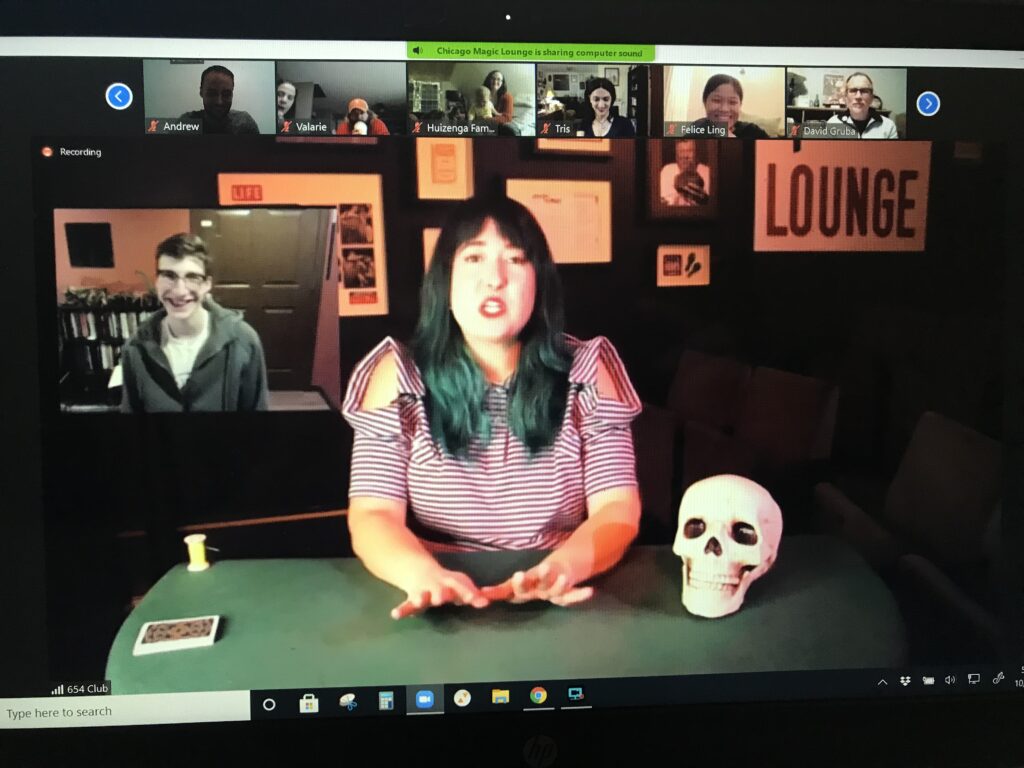
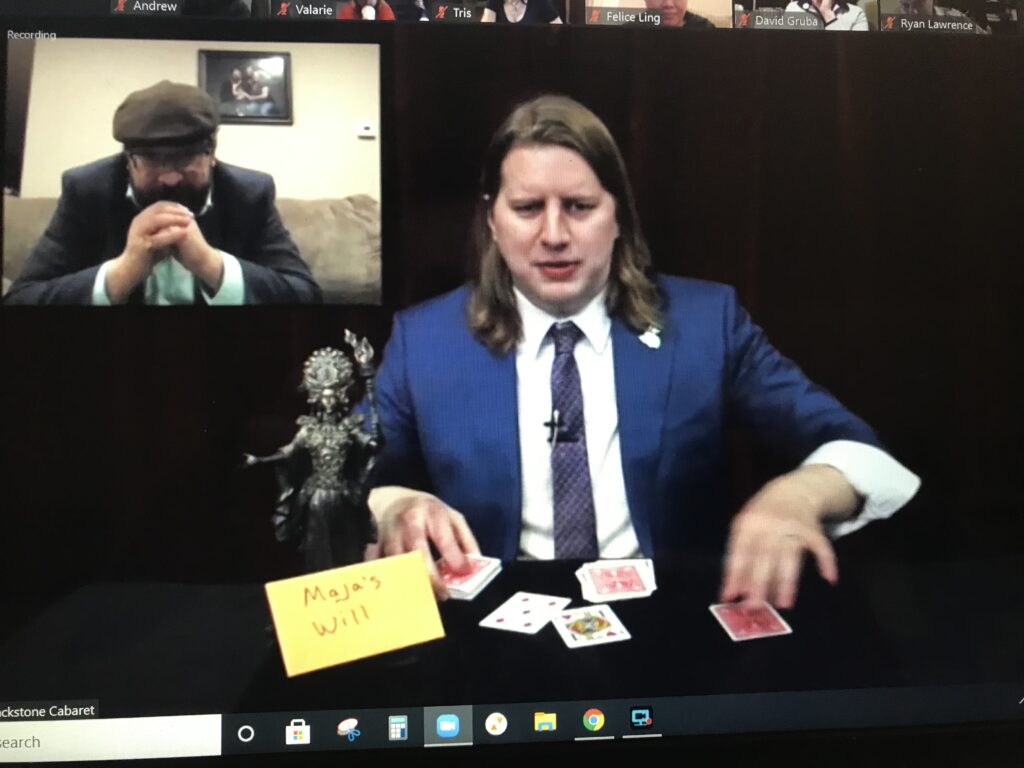
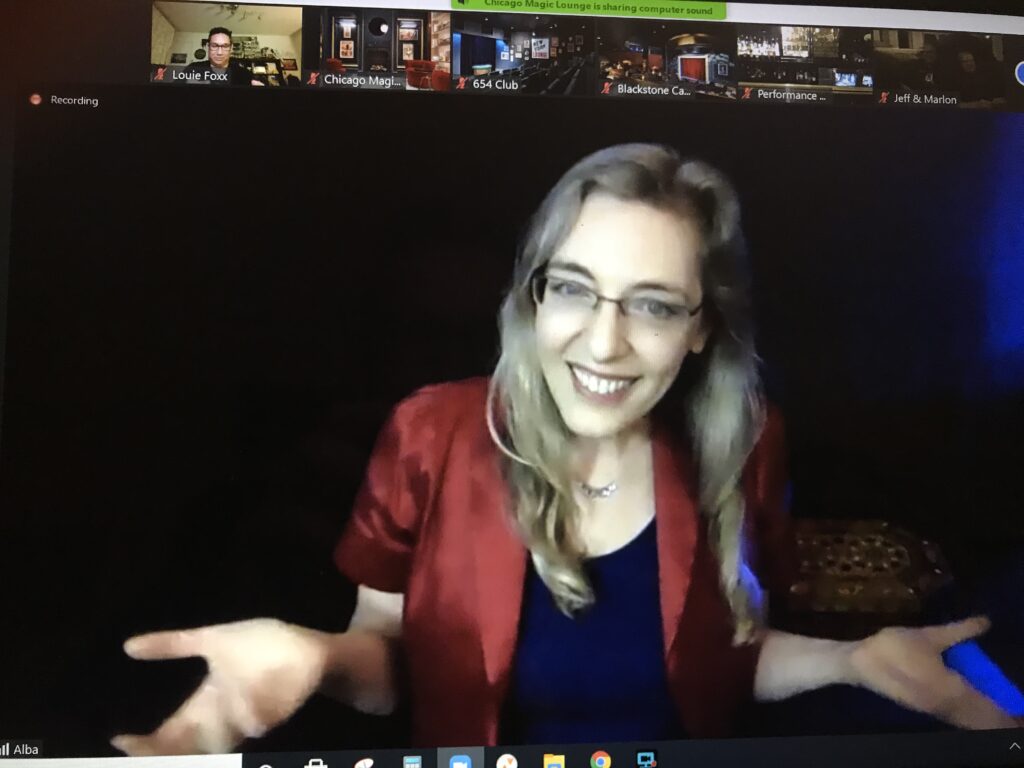
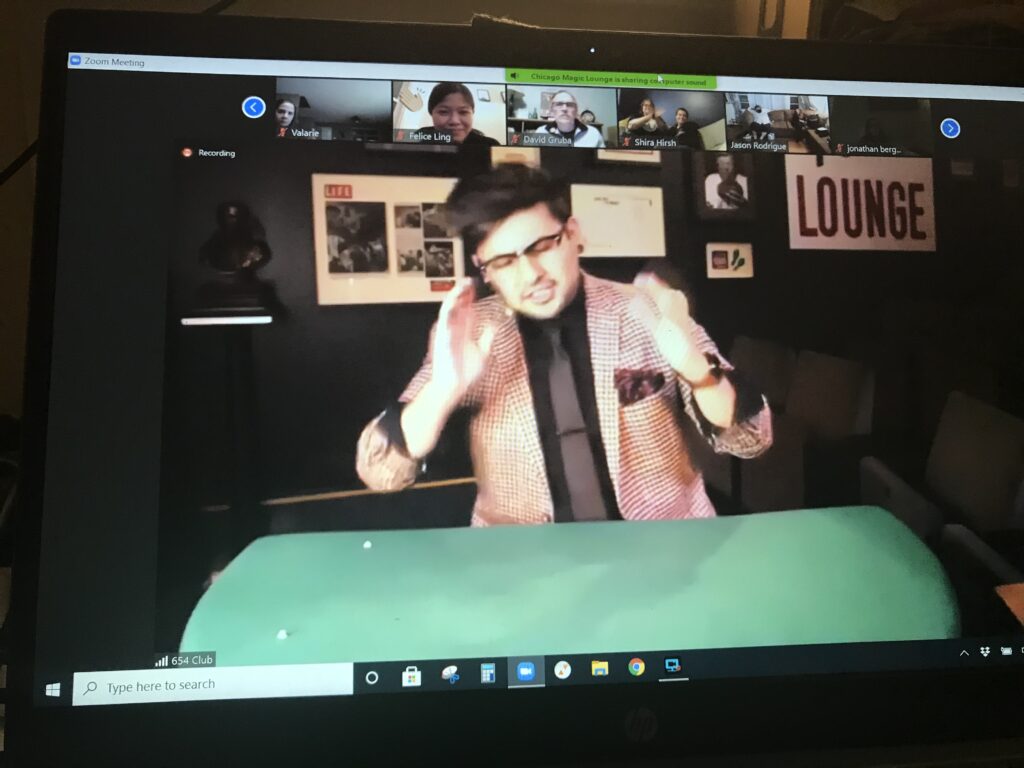
I didn’t get a picture of the host Benjamin Barnes, however he did a great job introducing the acts. Personally, I would have liked to see him do a set in there somewhere.
All of the acts used audience participation, with the helper on screen. They were in engaging, and the audience was fairly active in the chat.
One interesting thing that happened during the show was at one point when someone was picked to help out onscreen the guy said something like, “I thought this was all fake…“. What he meant was that he thought everyone helping was a stooge.
That comment raises an interesting question:
Do most audience members think these shows use stooges?
I don’t know if there’s a way to keep people from thinking that. People have the same thought at in person shows, so it’s not unique to a zoom show. This is more of a concern for a ticketed show than it is for a corporate zoom show.
Back to the Chicago Magic Lounge, for $15 it’s a solid show and worth checking out online. I think the overall run time was about 2 hours.
Putting It All Together…
This week I’ve written about putting together and interactive coin trick. Today, we’re putting it all together the force and the coin gimmicks. Here’s an example of what the trick could look like:
I like how the vanish at the end gives the trick a feeling of closure. It also builds off of the mini effect of knowing they picked the dime.
This is my first attempt at creating an interactive virtual magic trick from scratch. I think I did alright.
Interactive Coin Force…
Yesterday I wrote about working on an interactive coin trick (read it here). This is the style of trick where the person (or group) follows your instructions and you predict where they end. My version has a physical trick kicker that ends with a vanish of all the coins that the audience isn’t holding.
Today I’m going to talk about the procedure that I’m using to force the coins. I came up with my own force sequence for this routine. If you’ve just read Jim Steinmeyer’s Impuzziblities books, they don’t really teach you how to create your own sequence. That’s OK as that’s not the purpose of those books.
The book Body Mentalism by Juan Pablo Ibanez really does a good job of laying out principle that will allow you to create your own sequences. Right now with these “do as I do” interactive style tricks being very popular, I really recommend you get the book to understand the principle. I think knowing why the forces work is good knowledge to have in your head…even if you don’t intend on creating your own sequences.
Okay, let’s get to the sequence I came up with for the trick. You lay out four coins in a row, two pennies and two nickels. They are in this order:
Penny – Nickel – Penny – Nickel
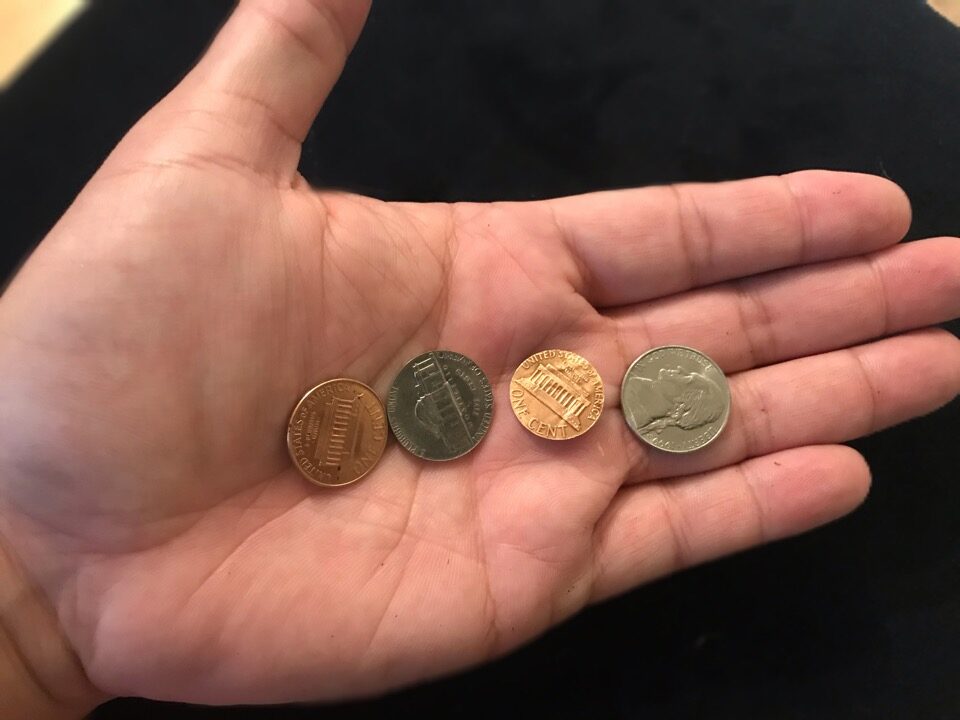
You have them touch any coin, then explain the “rules”. These are you will give them two things to spell, and they move one coin per letter. The first thing they spell is the name of the coin they are not touching. If they are touching a penny, they will spell N-I-C-K-E-L and if they are touching a nickel they will spell P-E-N-N-Y.
Now you have them spell the name of the coin that they are now touching. For example, if they are now touching the penny, they spell P-E-N-N-Y. The coin they are touching is now their new selected coin.
If they followed your instructions they will now be touching a nickel.
This sequence by itself isn’t very strong, but when you add the vanish of all the other coins, it becomes a pretty decent trick.
Interactive Coin Vanish…
One of the things that’s huge in magic right now are the tricks where the spectators at home follow along with what you do and you end up knowing what they are thinking of. I wrote about my thoughts on this recently, and you can read that blog post here. Basically I want to use add magic to the puzzle to make it more magical.
After the blog post, I wanted to come up with an original trick, with an original puzzle. The trick was going to use coins, so I went out a bought a 21 Cent Trick and a $1.35 Trick at my local magic shop. With these two sets added to the array of trick coins I already had at home, it would allow me a lot of options for the routine.
The premise I was going with was a coin would be selected and all of the coins would disappear. The problem I was having was with the sequence of the counting. There was too much of it.
I finally settled on using two pairs of coins, two pennies and two nickels. In the end they pick a nickel, and the other three coins disappear and there’s just a nickel left.
Behind the Virtual Curtain…
Performing a live, virtual show over Zoom it a lot more involved than most people think. Last night I gave a talk about and demonstration about Hand Shadow Puppets and taught a magic trick for the Washington State Parks Great Camp In over Zoom that was broadcasted on YouTube live.Here’s a side by side of what’s happening in the room and what is going out on YouTube.
The person I’m talking to is the host of the show, who is in another location.
The person in the room is my daughter who is running production for me.
For a bit of context, the speaker before me just gave a presentation about bats.
One of my goals when doing virtual shows is to do something that makes my daughter who is running production to laugh. I want to try to crack her up. During the bat presentation before mine, I quickly downloaded the flying bat graphic and added a button to my stream deck. Right before I was live, I told her she could hit the bat effect button anytime during the intro interview or the extro interview. She added the throwing of the physical stuffed bat without me knowing.
I got her to laugh, but also it puts energy and fun into the presentation! A lot of the virtual shows I’ve seen are missing energy and fun. I’m not saying you need to be bouncing off the walls, but so many are performed like they aren’t people watching at the other end of the camera. Figure out how to make the virtual show fun for you to do, and that goes a long way for the audience!
Halloween Shows…
I’m not a fan of doing shows for Halloween (you can read a post from last year here). I do have a no contact, socially distant magic show today, and I’m not really looking forward to it for the reasons listed in last year’s post. I am looking forward to seeing how my 30 min no contact magic show plays. Up until now I’ve only done 20 mins, so it’s a lot longer of a show.
Here’s a Halloween magic trick I created for another performer called Up The Candy Ladder, and published in Vanish Magazine (edition 75):
The nice thing about right now is that a trick like Up the Candy Ladder that uses no one from the audience and heavily gimmicked props is super practical right now!
